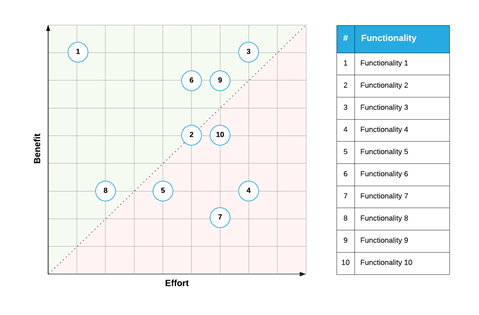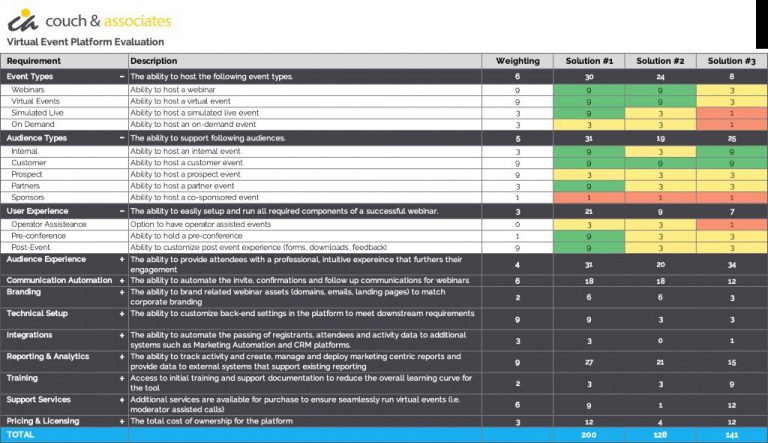
Events of all shapes and sizes have been moving online, from birthday parties to business conferences. Some will tell you that the transition was a huge success, others will still be cringing at some of the mistakes that were made. It’s a learning process, so don’t dwell on any decisions that you were forced to rush into in highly unusual circumstances. Let’s start at the beginning, the vendor selection process. When that is done effectively, following a proven methodology, you give yourself the platform that enables you to accomplish each of your event goals.
Capture use cases for how teams envision using the platform
The first thing to do is to establish what you intend to accomplish through online events. There is no checklist to say what features you need to have, that is up to you to determine based on unique business goals.
When making a purchase that affects multiple parties, everyone has a different perspective on what features will be most beneficial to them. Can you take snippets from recordings that marketers can use to create further content? What level of training is required before staff can use the platform comfortably?
Input is required from every stakeholder so that you can see the full range of beneficial features and from there, prioritize each need and measure them against the cost and level of effort that is required to fulfill that need. Discuss every desired aspect before evaluating which are required to meet those established goals.
Factors to consider when selecting a platform include:
- User and audience experiences
- Integrations with existing technology
- Data security and privacy
- Platform branding options
- Communication automation
- Analytics and reporting metrics
Prioritize functional elements
Once you have determined the elements that would combine to create your ideal system, prioritize them so that when a decision has to be made, you know which are crucial and which you can do without. The 1-3-9 decision matrix, where a 1 represents an element that you’d like to have but provides minimal value and a 9 is non-negotiable based on desired outcomes, will clearly lay this out.
Creating an Effort-Benefit ratio chart is a good tool to help determine the priority of each element. The sample image below illustrates the benefit each element provides compared to the level of effort, in terms of time and resources, that it will require to implement and run.

Creating an Effort-Benefit chart also helps to highlight the constraints that you face. While it is important to realize which elements you should be included, it is just as important to know which are simply not feasible or not worth the level of effort required at this time.
Score vendors against your criteria
You have now gathered and categorized information on the key criteria, next is to meet with selected providers to analyze their products in greater detail and understand how their features work practically. Refining your shortlist down to three or four providers for this final assessment is an ideal amount in most cases. Less than that and you limit your learnings of what is possible from different platforms. Meeting with more than four providers becomes a lengthy process and leaves you struggling to make a final decision with so many options available.
To make the most of these interactions with the platforms, and the access to people who use them daily, you need to go in prepared. Establish a set of questions that will help to highlight the differences between similar offerings and include a member of your technical team in the discussions.
Once you have a list of the required features and have seen how each vendor delivers these features, it is time to make a decision. Set up a scoring model like the example below. Weight the features based on their importance and score the vendors on how well their platform meets each requirement. The final score will determine which option is best suited to meeting your objectives.

The technology is one component, but without the proper supporting resources, process, maintenance, scalability and training, the goals of the business will not be fully realized. All those reasons mean this is not a process to rush into but one that takes strategy and planning to obtain the optimal result. Once you have the ideal vendor, the other elements begin to fall into place.
Click here for a (gated) guide detailing how Couch & Associates approach the vendor selection process.


